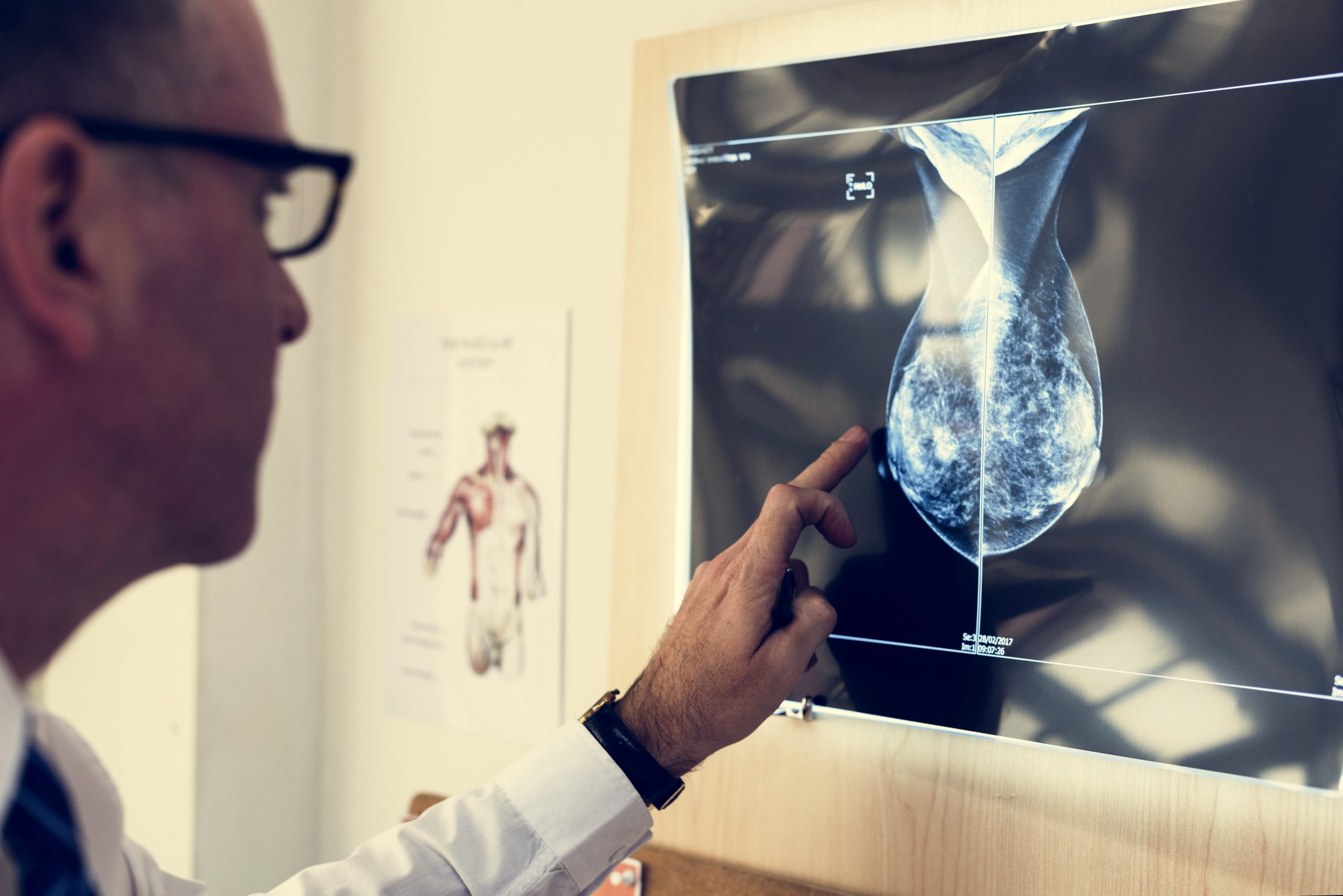What You Need to Know About Breast Density
With breast cancer awareness month upon us, it’s important to discuss not only the critical need for regular mammograms but also understand certain risk factors. One such factor is dense breast tissue–early studies reported a 4-6-fold increase in breast cancer risk. However, some more recent research points to a more narrow difference, but there is still a risk. Below, we detail what dense breast tissue is, how to determine if you have it, and what precautions you can take.
What is Dense Breast Tissue?
Breasts are comprised of three different types of tissue:
- Glandular tissue: The part of the breast that makes milk. It includes the lobules (milk-producing glands) and ducts (tubes that carry milk to the nipple). Glandular tissue is most prominent during reproductive years and breastfeeding.
- Fibrous connective tissue: This tissue provides support and structure to the breast and is made of collagen and cells called fibroblasts. This is the same tissue that forms ligaments and scar tissue.
- Fatty breast tissue: This tissue surrounds the fibrous and glandular tissue and helps give the breasts their shape and size.
The amount of fatty tissue varies among individuals and is a key factor in determining breast density.
What Does Breast Density Mean?
Simply put, breast density refers to the proportion of different tissues in your breasts. It’s a measure that’s determined through imaging, usually mammograms. Dense breast tissue, i.e., glandular and connective tissue, appears white on a mammogram instead of fatty tissue, which appears darker. The lack of contrast in dense breast mammograms makes it more challenging to spot abnormalities.
Dense Breast vs. Fatty Breast
Dense breasts have more glandular and fibrous tissue and less fatty breast tissue. It’s important to understand breast density for several reasons.
Classifications of Dense Breasts: BI-RADS Density Categories
Breast density varies from person to person. The Breast Imaging Reporting and Data System (BI-RADS) provides standardized categories to classify breast density, making it easier for doctors to communicate findings. These categories are divided into four types:
- BI-RADS 1: Almost entirely fatty breasts (easy to read).
- BI-RADS 2: Scattered areas of fibroglandular density.
- BI-RADS 3: Heterogeneously dense breasts (can obscure small masses).
- BI-RADS 4: Extremely dense breasts (lowers mammogram sensitivity).
You may need additional tests to detect abnormalities depending on your breast density classification.
How Common is Dense Breast Tissue?
Dense breast tissue is more common than you may think–particularly in older women. According to the National Cancer Institute, approximately 40% of women over the age of 40 have dense breasts. This could be due, in part, to the decrease in fatty tissue over time. But it’s also important to note that genetics plays a part in dense breast tissue.
How to know if you have dense breasts
The truth is, anybody can have dense breasts–close to 50% of women who have had mammogram screenings are classified as having dense breasts. Some are at a higher risk of having dense breasts than others due to the following reasons:
- Genetics: Evidence suggests that having family members with dense breasts increases the likelihood of also having dense breasts.
- Age: Women under 50 tend to have higher incidences of dense breasts, and breast density tapers off around menopause, though older women can still have dense breasts.
- Body Mass Index (BMI): Women with lower BMIs tend to have higher-density breasts.
- Hormone replacement therapy (HRT): HRT after menopause is associated with higher breast density.
Conversely, there are a few factors associated with lower breast density, such as having given birth and taking Tamoxifen, a medication used to treat or prevent certain breast cancers. If you are not sure if you have dense breasts, at your next mammogram screening, your provider should be able to tell you.
Breast Density and Cancer Risk
So, how does dense breast tissue relate to cancer risk? According to the National Cancer Institute, women with high breast density (>75%) have a four to six times greater risk of developing breast cancer compared to women with low breast density.
Why Does Density Increase Risk?
Researchers are not 100% sure why women with dense breasts are at an increased risk of cancer. There could be two underlying reasons:
- Hidden Lesions: Because dense tissue and tumors appear white on a mammogram, identifying issues earlier is more complicated, possibly delaying diagnosis and treatment.
- Increased Cell Activity: Denser tissue has more glandular cells, which are more active and thus more likely to undergo mutations that can lead to cancer.
Breast Density and Mammograms
Mammograms are critical diagnostic tools for breast cancer–they allow healthcare providers to spot abnormal breast tissue that may be cancerous. A radiologist examines the image from the mammogram for any signs of cancer or abnormal tissue. They look for areas of high density, which appear white on the X-ray. Normal fatty tissue appears dark, making dense tissue easier to spot. It’s difficult to make that distinction when breasts have more dense tissue. You may need additional diagnostic tests, such as ultrasound and MRI.
The Role of Ultrasound and MRI
For women with dense breast tissue, relying solely on mammography might not be enough. This is where ultrasound and MRI come into play.
- Ultrasound: Uses sound waves to produce images. It can detect lumps or abnormalities that mammograms may miss.
- Magnetic resonance imaging (MRI): Uses magnetic fields and radio waves to create detailed images of breast tissue.
Experts do not recommend that every woman with dense breasts undergo supplementary testing. Increased testing can lead to more false positives, which is when an abnormality is mistakenly considered potentially cancerous. Speak with your healthcare provider before deciding to undergo any additional screenings.
What You Can Do If You Have Dense Breasts
If you have dense breast tissue, proactive monitoring is key. Work with your provider to create a long-term plan to help you stay ahead of any issues. Consider these strategies:
- Keep up with annual screenings: Depending on your specific risk, your provider might recommend yearly mammograms or additional testing like ultrasounds.
- Maintain records of your health history: Document your screenings, like mammograms and ultrasounds, along with any symptoms.
- Regularly consult with your provider: Schedule regular appointments to review your plan with your provider. Update it as needed based on any changes in your health.
Scheduling these regular check-ups and maintaining records contribute to your overall peace of mind. Think of it as your health roadmap.
Tips for Discussing Dense Breast Health Concerns With Your Doctor
Working with your healthcare provider to address your concerns and monitor your risks is the most valuable tool when you have dense breasts or any other risk factors. Here are some tips to have productive conversations with your provider:
- Be prepared: Write down your questions beforehand. Things like “What does having dense breasts mean for me?” and “Are there additional tests I need?”
- Bring a friend: Another set of ears can help absorb information and ask questions you might not think of.
- Don’t be shy: There are no wrong or inconsequential questions regarding your health, so do not hesitate to ask any you have.
At Genesis we specialize in dense breasts
If you have dense breasts, the most important thing you can do is understand the condition, get educated, and discuss screening options with your provider. At Genesis, our providers are experts in mammography, helping thousands of women each year in Phoenix, Tucson, Prescott and several other cities across Arizona. If you are due for your annual mammogram, contact us to request an appointment today.


